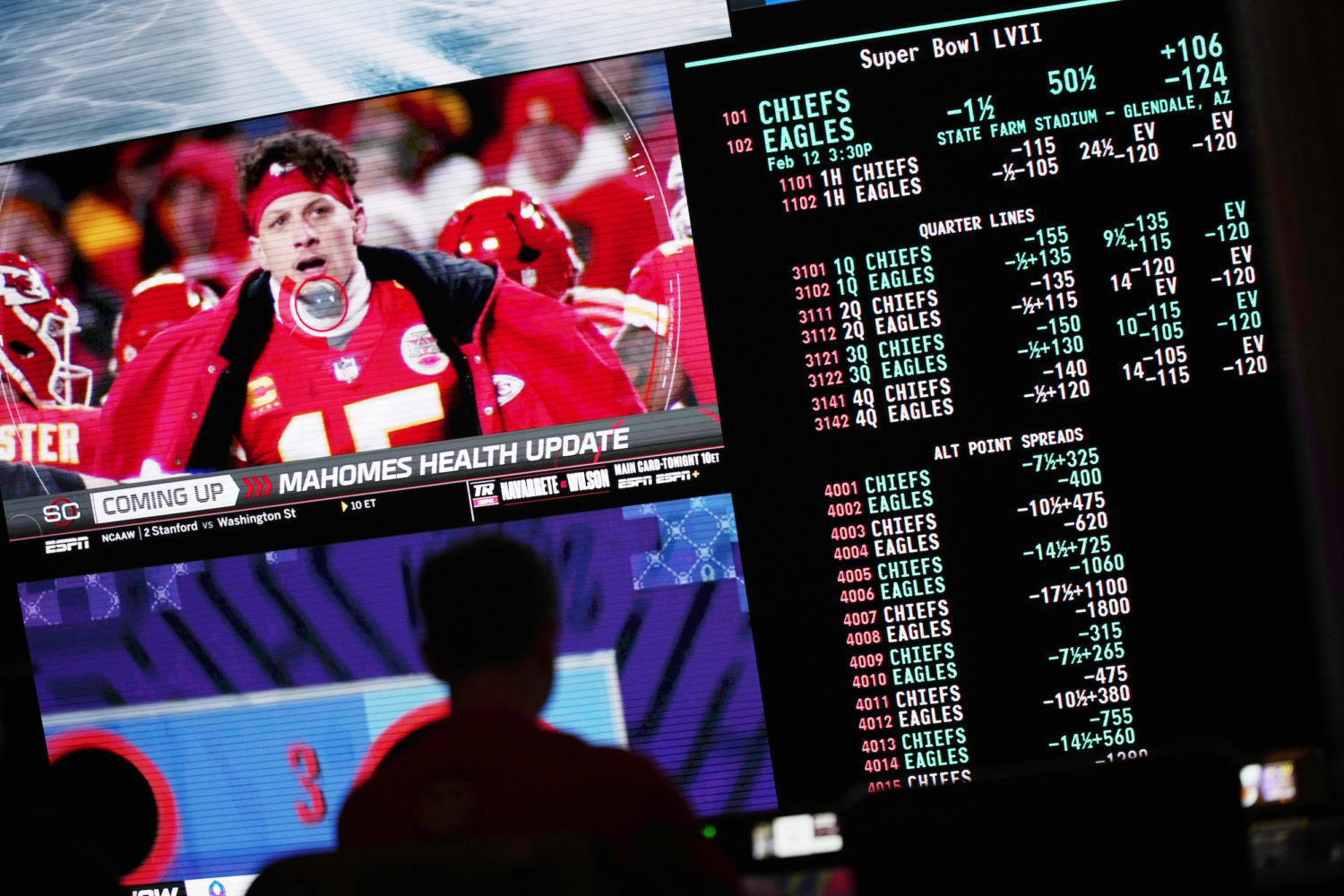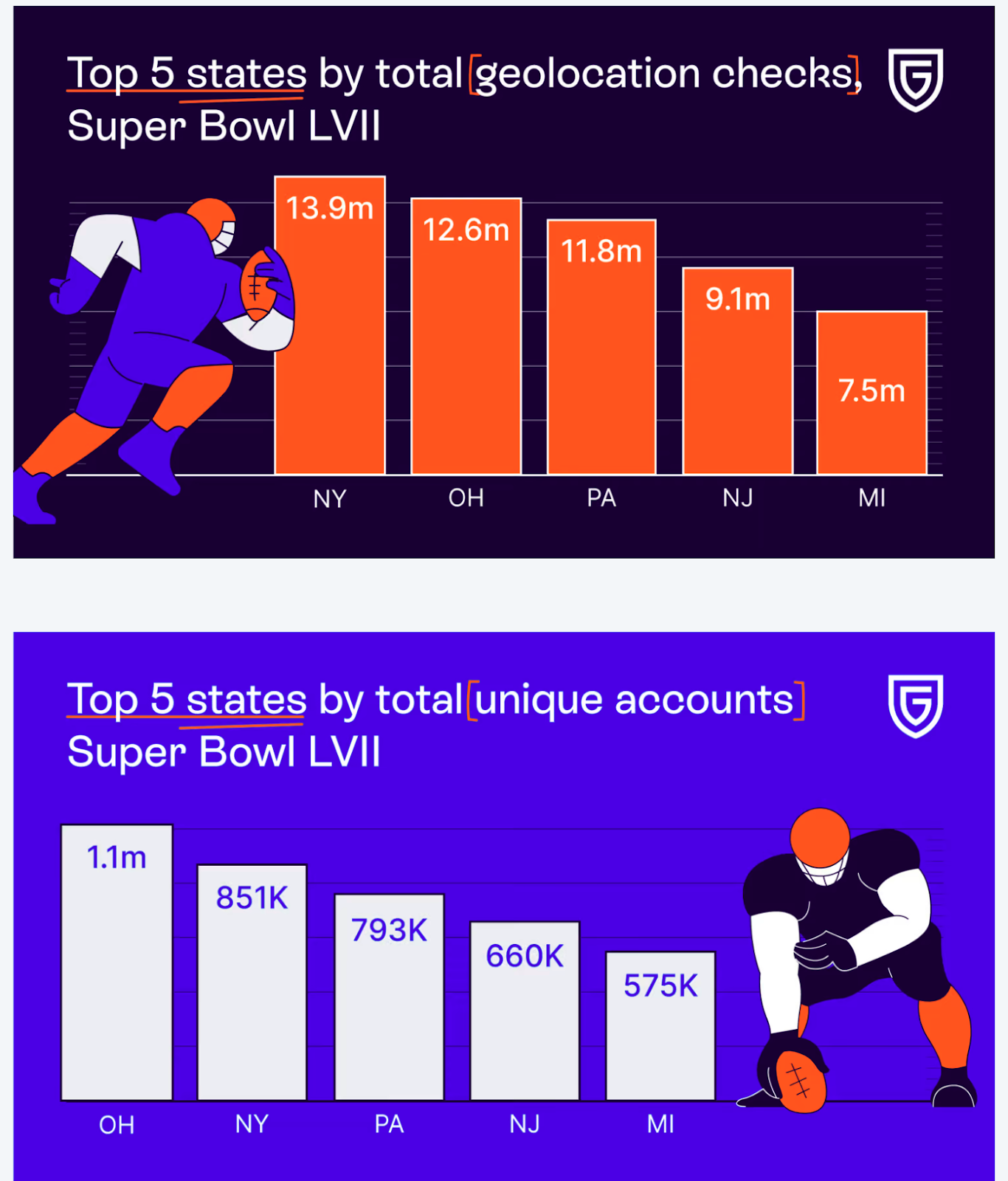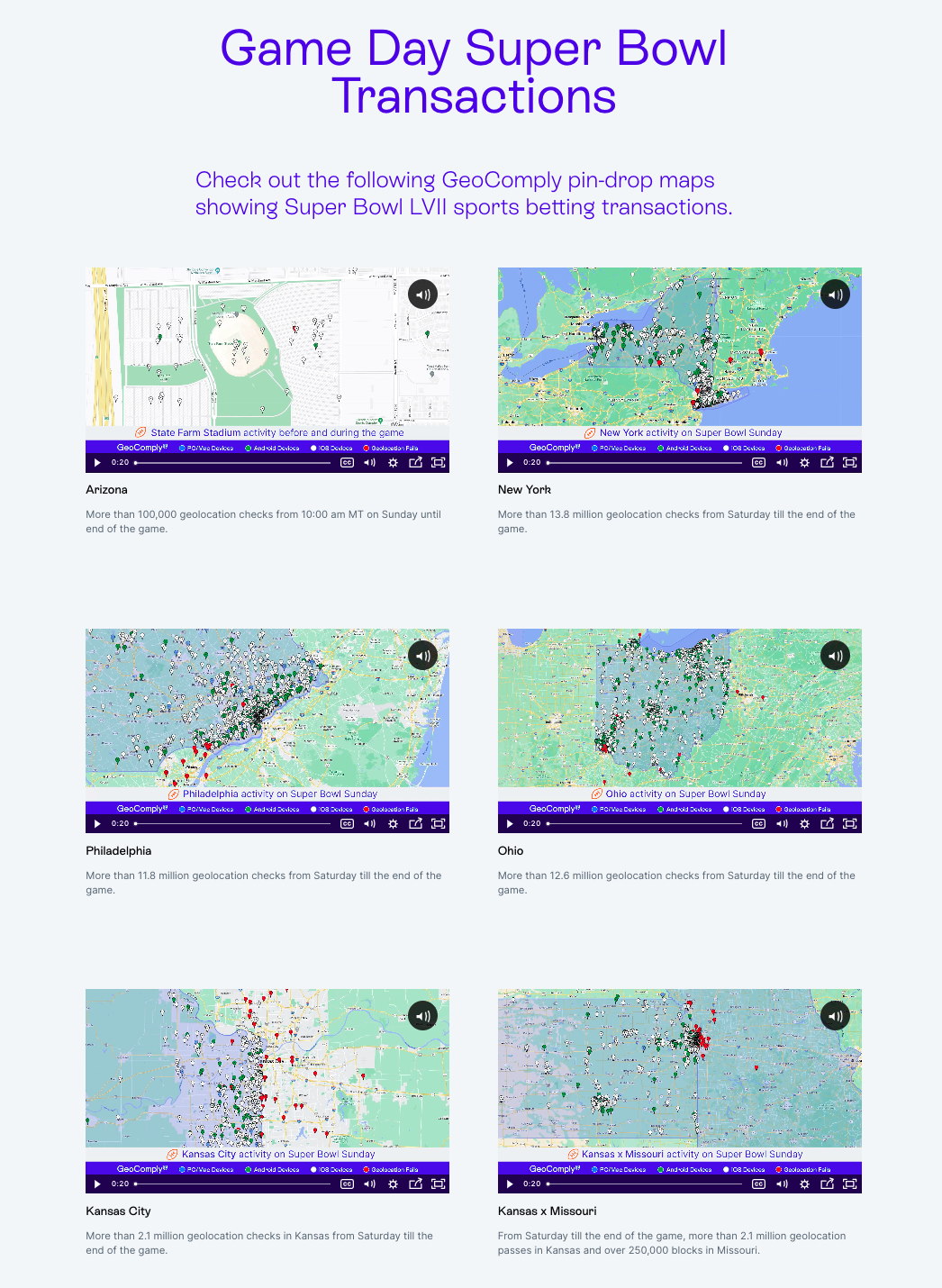
The Morning Meeting with Al Tompkins is a daily Poynter briefing of story ideas worth considering and more timely context for journalists, written by senior faculty Al Tompkins. Sign up here to have it delivered to your inbox every weekday morning.
North of 54 million Americans had money on the Super Bowl, the American Gaming Association estimates. That’s about twice the 2022 estimate.
One reason, the association says, is that “33 states and Washington, D.C., currently feature live, legal sports betting markets, with three additional legal markets awaiting launch. More than half of American adults (57%, 146M) live in a live, legal sports betting market.”
A company called GeoComply, which processes geolocation checks to verify online sports bettors’ locations for a majority of the U.S. online sports betting market, says it “conducted 100 million geolocation checks on Saturday and Sunday, a 25 percent increase from last year’s Super Bowl weekend. GeoComply registered 7.4 million accounts over the weekend. This is a 32% increase from last year.”
Wait until you see these pin-drop maps that show where people were placing bets in select cities, including Kansas City and Philadelphia. The sheer volume will amaze you. Click on the image.
GeoComply reported 11.83 million geolocation transactions in Pennsylvania, an increase of 15.1% from last year’s rate. The state saw 793,073 unique registered accounts over the weekend, a 15.9% increase from the 2022 Super Bowl.
Missouri does not currently have legalized sports betting, but nearby Kansas legalized in September 2022. Kansas reported 2.1 million geolocation transactions and saw 180,482 unique accounts registered over Super Bowl weekend.
Arizona, home to the Super Bowl, reported 6.1 million geolocation transactions and saw 387,170 unique accounts registered for the game. GeoComply recorded over 100,000 geolocation checks from mobile phones on Arizona-regulated online sportsbook in and around State Farm Stadium in Glendale.
But New York led all states this weekend in activity, according to the company, which isn’t much of a surprise as New York has dominated the sports betting market since launching online sports betting in January 2022. New York reported 13.9 million geolocation transactions over the weekend and saw 851,000 uniquely registered accounts.
Surprisingly, Ohio had the most newly registered accounts over the weekend, with more than 1.1 million.
CNBC reports:
FanDuel expected to handle more than 17 million Super Bowl bets. At its peak, the sportsbook told CNBC, it accepted 50,000 bets per second and averaged 2 million active users on its platform throughout the game.
By the way, CNBC reminds you, if you were a big winner using an online gaming site, the IRS expects to hear from you:
The money you win through gambling — whether that’s through gambling sites or apps, casinos, raffles or fantasy sports leagues — is considered taxable income by the Internal Revenue Service. The fair market value of non-cash prizes is taxed, too.
Typically, when you win $600 or more, gambling businesses will send you and the IRS tax forms, commonly a W-2G, but sometimes a 1099-MISC for raffle or sweepstake prizes.
‘Right to repair’ bills introduced in 17 states
The “right to repair” movement is having a moment in the sun, but people who want to be able to fix their own electronics, farm equipment or machinery with computer parts have a long fight ahead.
The right to repair battle is over the fact that some manufacturers refuse to provide passwords, security codes or materials to override security features on devices, and that manufacturers provide entire assemblies of parts, rather than individual parts, to fix broken devices.
Stateline reports, “Critics say that last requirement forces consumers to pay for an entire assembly rather than, say, one chip.”
17 states have legislation pending that would make it easier for you to fix your own stuff. Stateline says:
A Consumer Reports survey conducted in 2021 found that 84% of the U.S. adults polled said they agreed with a policy that would require manufacturers to make repair information and parts available either to independent repairers or to product owners.
Some of the state bills cover a broad variety of devices, as does New York’s law. Others are more tailored: Montana, for example, had a bill that would have helped wheelchair users fix their equipment, mimicking Colorado, which enacted similar legislation last year.
But the Montana legislation was shot down just days ago on an 11-10 committee vote, when some Republican lawmakers expressed concern over safety issues, according to the Daily Montanan.
In addition, supporters in Maine say they have enough signatures to put an automobile right to repair initiative on the ballot. The Maine initiative is modeled after a similar law in Massachusetts, which is currently hung up in federal court.
Elizabeth Chamberlain, director of sustainability at iFixit, an independent technology repair company, said that while momentum is building, the New York case shows that right to repair advocates need to be vigilant about all the legislation.
But the movement is accelerating, she said. For example, in California, state Sen. Susan Eggman, a Democrat, has introduced a broad right to repair bill for the fifth time, but now is more optimistic.
“It’s rare to introduce a big new idea and be successful on the first attempt,” Eggman said in a statement emailed to Stateline. “From the federal action to other state bills and manufacturers reacting to this momentum by improving reparability and access to repair, the idea is catching on. It’s a lot harder to argue against when people are aware of it.”
The newest right to repair legislation is pending in California, Colorado, Connecticut, Delaware, Florida, Hawaii, Massachusetts, Missouri, Montana, New Jersey, New Hampshire, Oklahoma, Oregon, Tennessee, Texas, Vermont and Washington.
Why are Americans dropping their life insurance post-COVID?
Americans bought a lot of life insurance during the height of the pandemic. But, research group LIMRA says, “The strong consumer demand for life insurance we saw in 2021 has been waning.” LIMRA is forecasting slight declines in 2022 with sales leveling in 2023.
The association reported late 2022 data showing:
Since January 2022, consumers’ concerns about the pandemic, which played a role in driving the record premium and policy sales growth in 2021, have diminished as worries about the economy and inflation increased over several months. As a result, the surge in smaller whole life (WL) and term policy sales experienced in 2021 ended in 2022. Although new premium for these products remains above pre-pandemic levels.”
The association’s 2021 data found:
In January 2021, just 52% of consumers reported owning life insurance (e.g., individual, employer-sponsored, etc.), which is down from 63% in 2011.
Overall, there are 102 million uninsured and underinsured Americans who know they need (or need more) life insurance coverage.
Forty-two percent of Americans say their household would face financial hardship within six months should a wage earner die unexpectedly — 25% would struggle financially within a month.
Forbes says, “Women (22%) are twice as likely as men (11%) to lack life insurance. The number of Americans who believe they don’t have enough life insurance has more than doubled since 2010. Fewer than half of people without life insurance surveyed in this study say they feel financially secure. The same survey found that 68% of life insurance owners say they do feel financially secure.
It all reminds me of a Kenny Chesney country song:
Everybody wants to go to heaven
Have a mansion high above the clouds
Everybody want to go to heaven
But nobody want to go now
Clarification: This article was updated to change a reference to “Life Insurance Market Research Association” to “LIMRA.” LIMRA is a legit research group that wants journalists to use that name rather than the name they used to use, Life Insurance Market Research Association, which actually explains what they do. To my mind, they are not well enough known outside of their circles to use a name that sounds like a mammal from Madagascar, but hey, they wanted a clarification.










